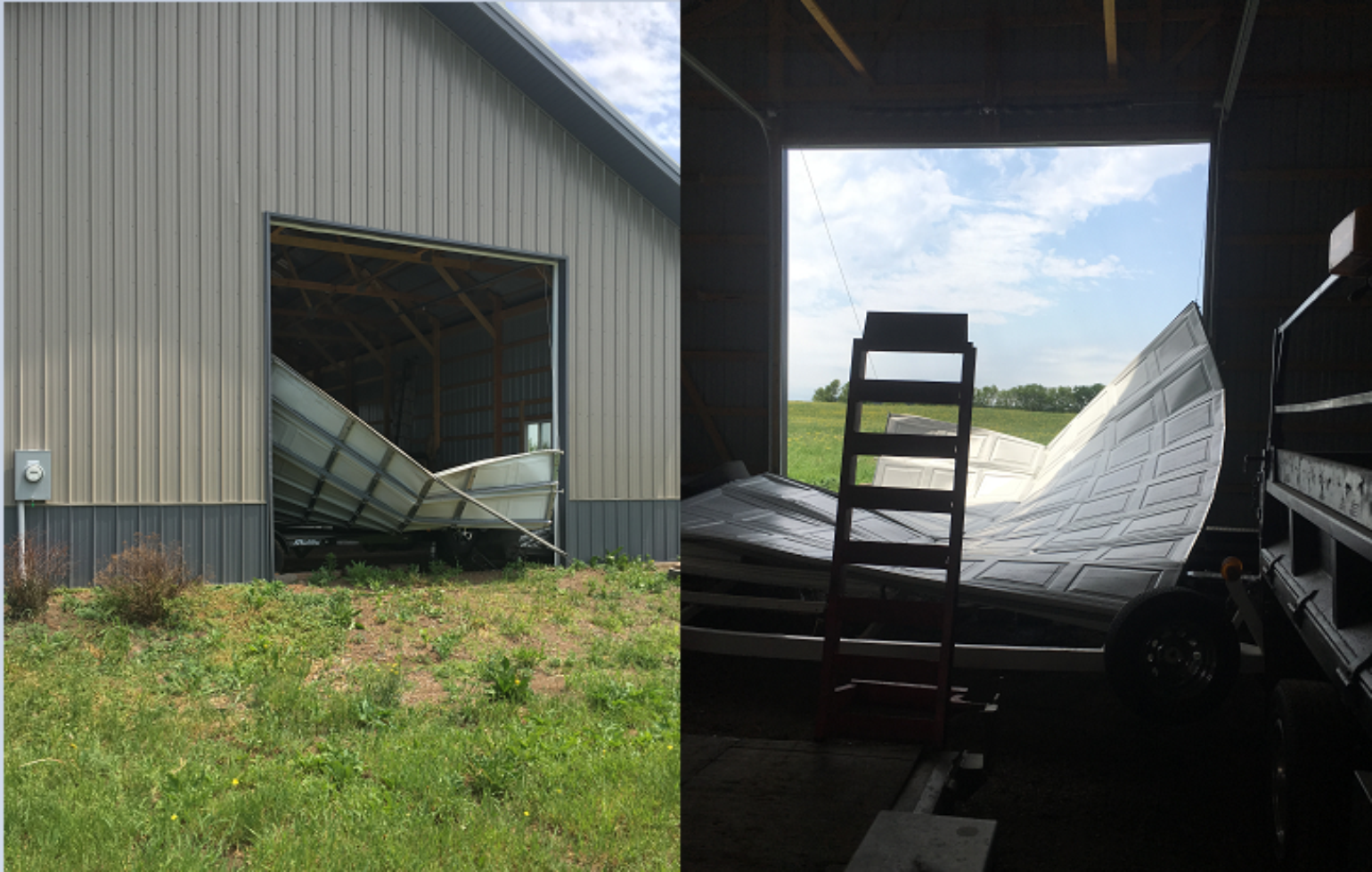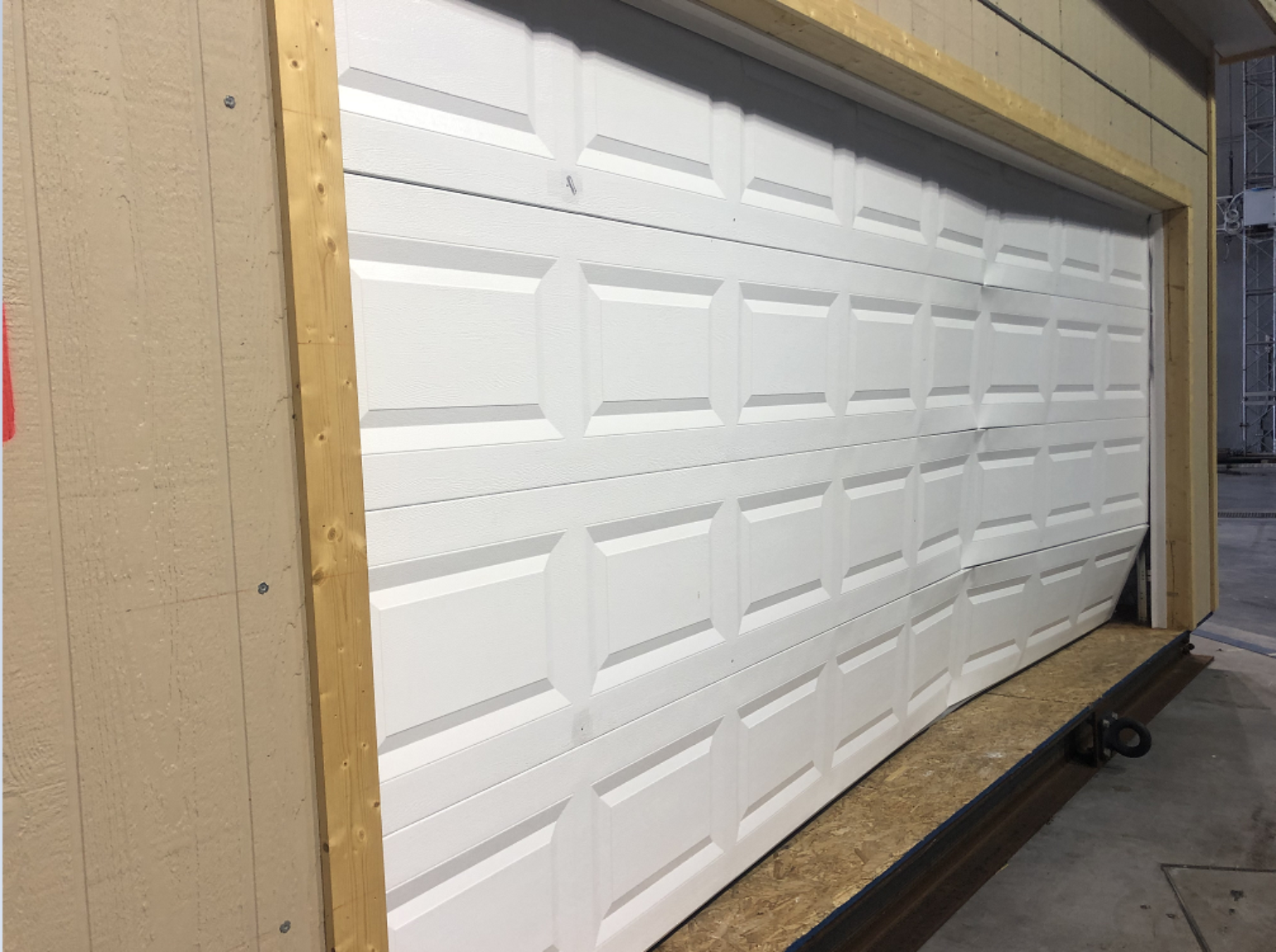Most Americans have fallen in love with the automobile, which is why miles of roadways reach across the country and so many residential structures in the U.S. have garages to keep these assets safe and clean. However, garages can become major problems in high wind events. When the doors to these large open spaces fail, it can cause major structural damage.
This past week, I was fortunate enough to attend the Insurance Institute for Business & Home Safety’s (IBHS) fourth Disaster Dynamics Academy session - Inside the Eye: Defending Homes Against Hurricane Damage. In this BMS Insight, I will share my experiences and what I learned about garage doors being a damage amplifier.
A Meteorologist’s Dream
Throughout my career, I have read countless papers about hurricanes, helped price and understand various aspects of hurricane risk, examined gigabytes of hurricane wind and claims data, and helped insurance companies recover after the devastation these events can cause. However, growing up and living as far away from an ocean as one can get, I’ve had limited firsthand experience with hurricanes. In fact, my only experience was on September 4, 2010, while living in Halifax, Nova Scotia, Canada, when Category 1 Hurricane Earl raced across the area. Most people wisely took shelter, but I took the more unconventional approach as a meteorologist to experience the hurricane-force winds for myself (as safely as possible). On that day, I headed out to Lawrencetown Coastal Heritage Park beach to experience my first hurricane. It truly gave me a new appreciation for what a hurricane can do and for what the insurance clients I support are facing every year.

Because I have spent most of my life living in the Upper Midwest, I’ve experienced my share of strong wind events while supporting insurance clients that have had to endure the same damaging windstorms. In fact, I’ve had firsthand experience with some of the research that the IBHS is currently conducting. I recently had a pole barn built on a big open farm field. On June 11, 2017, a strong line of thunderstorms worked their way across the western metro area of Minneapolis. A downburst of wind from these storms blew in the barn door, also causing damage to part of the roof. Luckily, there was no structural damage to the newly constructed barn, but, as a result, our replacement door was upgraded to a reinforced W4 door with a wind rating of 110 mph to prevent another similar incident.

Garage Doors Are a Wind Amplifier
During the Disaster Dynamics Academy, the IBHS showcased to its members the steps that can be taken to limit storm damage to various residential and commercial structures. After several years of IBHS demonstrations showing how fortified and non-fortified structures handle hurricane-force winds in its giant wind tunnel, this week they tested garage doors. After all, the garage door is a wind damage amplifier. Garage doors have a large surface area that can be affected by hurricanes and other severe convective winds events, such as downbursts or tornadoes. They are an amplifier because a breach often results in larger structural damage to the roof and walls. However, there are many questions about how this damage occurs, and the IBHS wind tunnel is the perfect place to find answers.
The IBHS conducts scientific research to improve building material performance and construction standards. Recent testing has included asphalt shingle performance research and continuous load path testing. The IBHS has also done extensive field investigation into past hurricanes and strong tornadoes, such as the 2013 Moore tornado, to help understand the various aspects of wind damage. One of the key findings from the garage door field investigation is that roughly 60% of homes had structural roof damage if the garage door was damaged, while roof damage hardly ever occurred if the garage door remained intact. This supports the notion that the garage door is an amplifier of damage.
IBHS Garage Door Testing
In the IBHS wind tunnel garage door testing, they were focused on determining the most appropriate methods and cost-effective practices to ensure that buildings are adequately constructed for the hazards they face. However, the questions around garage doors are complex. The internal pressure may be three times more than the external pressure, resulting in a large pressure difference between the inside and outside of the building. This can lead to major structural failure when the pressure equalizes. Damage that is commonly associated with a failed garage door is the collapse of an adjacent side wall. Some garage door failures may result in the loss of roof decking above the garage, or in extreme cases, the entire garage may collapse. If the garage door fails, it can also lead to a large amount of water entering the building, which can increase damage to contents from wind-driven rain.
The IBHS garage door testing looked at many different types of doors, including the double car door, single car door, twin single-car door, commercial roll-up doors, garage doors with and without automatic openers, and even insulated and non-insulated doors. There are many other variables that needed to be tested to help understand door failure, such as critical wind angles to the door and different wind speeds. The IBHS tested both wind rated doors and non-wind rated doors, as well as the types of hardware used to install the door. One could have a wind rated door, but it may come with normal hardware that could be prone to failure.
This is my raw iPhone video of the test and the resulting damage. The test showed that the door folded in, and the hardware holding the door also failed. Also notice some of the testing of the fabric roofing material letting lose.

The Test
I can’t comment on all of the initial testing the IBHS has been conducting, but I can share my experience with the Disaster Dynamics Academy garage door test session. The test involved a normal big box store double garage door without an automatic opener. The standard two stall garage area was equipped with various pressure sensors along the wall and door; after all, the pressure on the walls is critical to what causes the overall failure. As the test began, the IBHS 105 Vaneaxial fan array, each with a 350 horsepower motor, were started at a steady 50 mph and were slowly ramped up every few seconds. As the fans approached hurricane-force levels, you could hear the wind whip around inside the six-story, 21,000 square foot testing area as turbulent winds began to flex the double garage door. As expected, the door folded in and hardware failed at around 90 mph. If it were not for the bracing behind the door to support the array of sensors, the door would have likely folded in completely and been ripped off its rollers and pushed to the back of the two stall garage space. Maybe the most exciting part of the test was the fact that the fortified structure sustained very little damage to category 3 winds, which was expected, as this was a test for doors and not to see the results of building failure. If the IBHS did a building failure test with every door, the testing could take years to complete, which is why the fortified construction is so important. Given the personal experience with my barn, and then seeing first-hand how easily a garage door can fail in the IBHS test facility, I believe there needs to be more attention paid to this wind damage amplifier. Currently, however, there are very few insurance companies that underwrite for such wind variables. What’s even more concerning is that very few areas of the country have building codes requiring wind-rated doors. Hopefully, with the important work that the IBHS is doing, the most appropriate methods and cost-effective practices for garage door construction can be determined. In addition, building codes could be established and existing code standards updated, all from using science in one of the coolest facilities I have ever been in.

